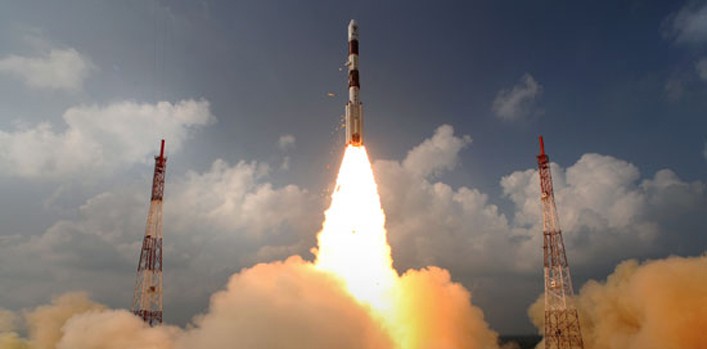The Indian Space Research Organisation (ISRO) now has yet another feather to put in its cap. On Wednesday, that is today, the organization successfully launched its latest communication satellite GSAT-29.
The satellite was put in its orbit by India’s heavy-lift rocket Geosynchronous Satellite Launch Vehicle. More popularly known as the GSLV Mk III, it is the heaviest rocket India currently has and took just over 16 minutes to reach the GTO and place the GSAT-29.
India expects to use the rocket for the human spaceflight proposed for 2022, and in view of this impending spaceflight, today’s launch held significant strategic importance.
By putting the GSAT-29 (which weighs somewhere around 3,423 kg and is the 33rd communications satellite made by India) into the Geo Transfer Orbit (GTO), the GSLV Mk III has proved its mettle yet again. Weighing 641 tons, the rocket is around 43-meters tall and took 15 years to develop. It is a three-stage rocket: Two boosters with solid propellant make-up the first stage, the core with liquid propellant forms the second stage, and finally comes the cryogenic engine. Each of the rocket’s launches cost around 3000 crores.
After the successful launch, ISRO Chairman Dr K Sivan said:
India has achieved significant milestone with our heaviest launcher lifting off the heaviest satellite from the Indian soil. The launch vehicle has precisely placed the satellite in its intended orbit. I congratulate entire ISRO team for this achievement.
Prior to this, GSLV Mk III has completed two other successful test flights, one of which was experimental and the other developmental. Interestingly, this was the 67th launch that took place from Sriharikota.
Next up on the GSLV Mk III’s launch schedule is Chandrayaan-2 next year, and Gaganyaan before 2022.
The Tech Portal is published by Blue Box Media Private Limited. Our investors have no influence over our reporting. Read our full Ownership and Funding Disclosure →






